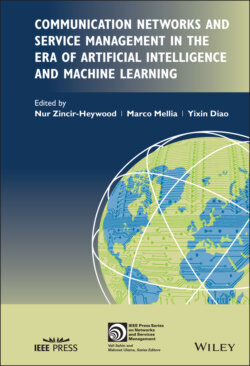Читать книгу Communication Networks and Service Management in the Era of Artificial Intelligence and Machine Learning - Группа авторов - Страница 36
2.2.2 Unsupervised Learning
ОглавлениеThe goal of unsupervised learning is to identify the regularities in the input. The assumption is that there is a structure to the input space such that certain patterns occur more often than others. Figure 2.2 shows an overview of the unsupervised learning model. Thus, we aim to identify and differentiate between patterns with different underlying properties. Once this is achieved, we might also be able to distinguish between typical and atypical behaviors. One method to achieve this is clustering. Clustering aims to find groupings of input. This can be used for data exploration to understand the structure of data and/or for data preprocessing where clustering allows us to map data to a new dimensional space, where the new dimensionality can be larger than the original dimensionality of the data. One advantage of unsupervised learning is that it does not required labeled data. Labeling data (obtaining ground‐truth) is costly. Thus, we can use large amounts of unlabeled data for learning the cluster parameters. This is why unsupervised learning is widely used for “anomaly detection” in network and service management [11–13].
Figure 2.2 Unsupervised learning model.
Figure 2.3 Reinforcement learning model.
